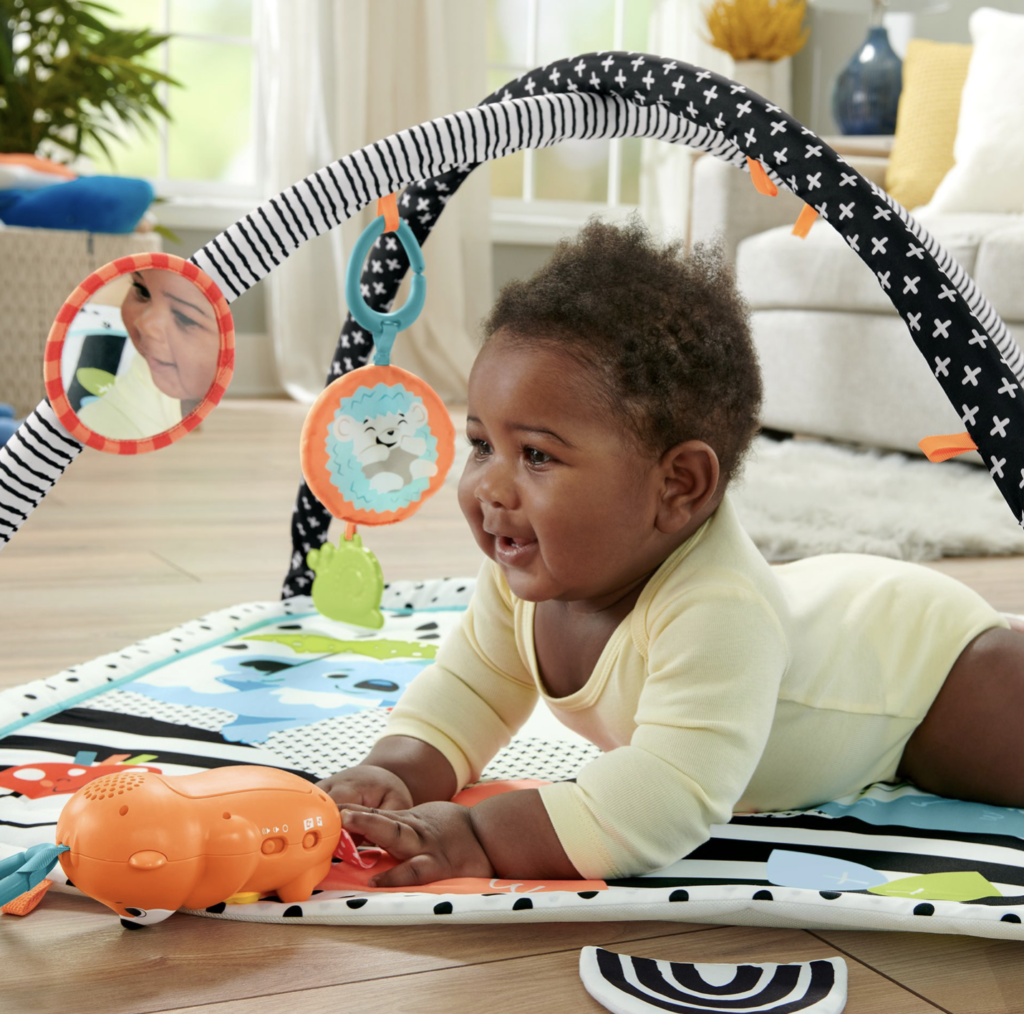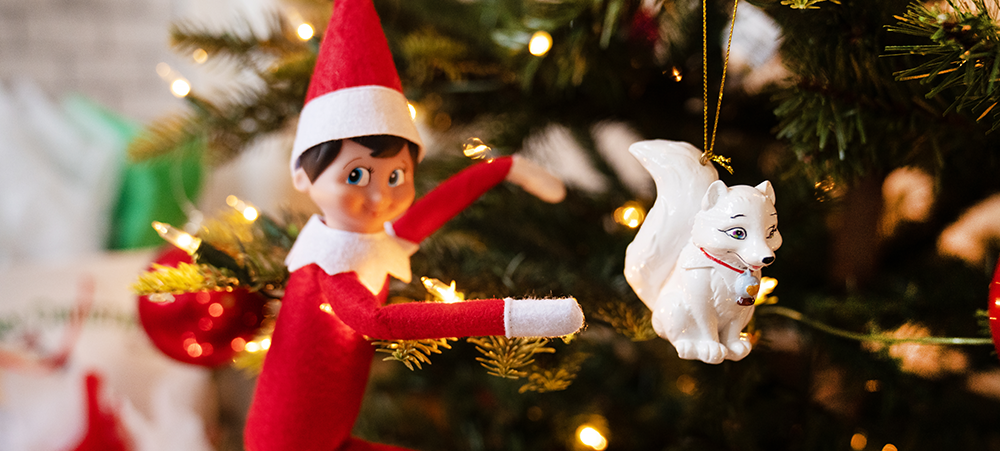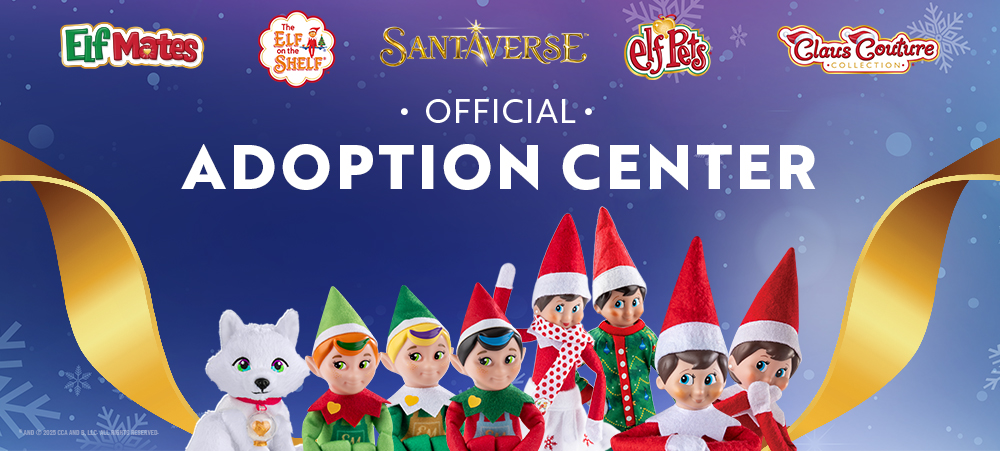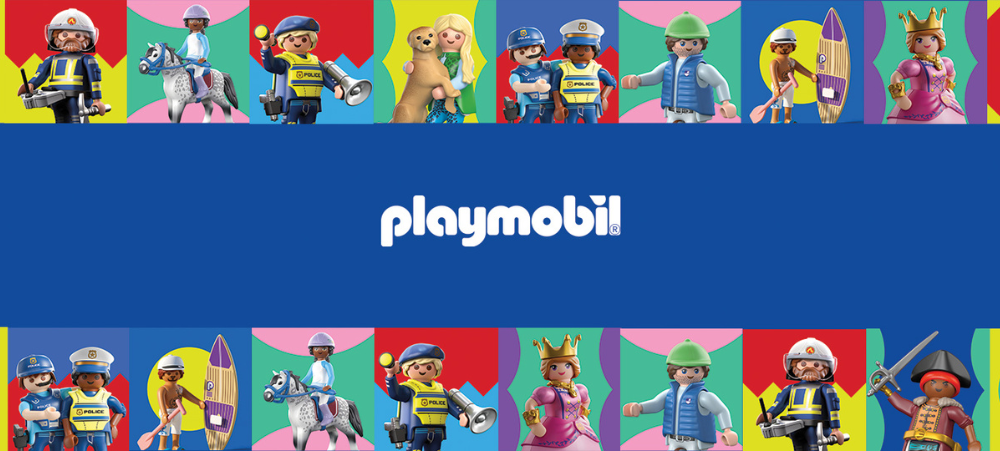The first giggle, the first time they roll over, their first steps… your little one will reach such joy-inducing milestones – or SMILEstones – in the first few years of their lives.
To Fisher-Price, these development skills are so important, they sit right at the very heart of the Play Lab child research, where toys are put through their paces by the real experts: the kids!
Whether it’s an overhead gym for a newborn, a crawl-with-me toy for a six-month-old, a walker for those first steps at 12 months or characters that spark imaginative play for toddlers.

Each toy is designed with Fisher-Price’s Early Childhood Development & Learning (ECDL) Framework at its core, upholding the brand’s commitment to babies’, toddlers’ and preschoolers’ physical, cognitive, social, and emotional development.
It provides development teams with a framework to create products that are fun, engaging, and that also supports children’s learning. And this in turn makes play so much more than play – and toys, so much more than toys.
Deborah Weber, PhD, Director of Play and Early Childhood Development Research at Fisher-Price, said: “The reason we created a framework of skills was to provide the development teams with a subset of skills that the children are acquiring at different ages and stages, for the toys they are designing and the ages they are designing for.
“We want to have a well-rounded offering of toys for families to help foster children’s development in each area – social, physical and cognitive development. Ensuring we have toys to pick and choose from that can really help foster that whole child in each area.
“We also provide examples of what type of toy features or play patterns help foster and develop those skills, so the designers can incorporate them into their toys.
“So for example a toy suitable for a six-month-old that will grow with them up to 36 months – this framework shows us the types of skills children have to play with the toy and these are the types of features to integrate into that toy to foster that type of skill acquisition.
“It’s about providing that foundation for whole child development, it’s also providing an opportunity for children to engage and play and have a great experience and love it, using toys as tools through learning, because as we know children learn through play.
“One of the things that really helps our parents or gift givers is providing that developmentally appropriate age grade on toys, to give them guidance in terms of when to buy the toys for different ages and stages.
“We also offer different ways to play with their child. We offer up that play-based experience that also provides that optimal magical moment where they actually encounter a smilestone.
“Like their first smile or the first time they clap.
“It’s not just about the rolling over, sitting up, walking – the smilestones are all about those magical milestones of clapping their hands, of playing peekaboo, of their first word, of that first vocal connection.
“When parents or caregivers experience these little milestones, it makes them smile. And for us, it’s all about celebrating childhood and the milestones, and because every time a child reaches one or shares one, everyone smiles.”
Developmental smilestones, and the toys designed for them
0-3 months:
- During this time, your little bundle of joy will begin to return emotions, smiles and holding eye contact.
- They’ll also be able to lift their head, extent their legs and briefly grasp objects.
- In terms of cognitive ability, babies will be able to look at objects, listen to sounds and recognise smells.
How to play:
Give your little one objects for watching, about 8-10 inches from their eyes. Choose toys with different textures and shapes for babies to feel, and put them within reach so they can swat with their hands and feet.
3-6 months:
- You can expect your baby to start giggling around this time, while playing, and they’ll even start to imitate your facial expressions too.
- Little ones will be able to turn their heads in all directions and begin to roll over.
- They’ll also imitate sounds and actions, they will like feeling different textures and be curious to examine objects too.
How to play:
Play peek-a-boo, or use moving objects paired with sounds and/or lights. Choose a variety of textured materials, and look for toys with a high contrast in bright colours.
6-9 months:
- Around this time, your little one will start to recognise family members, and they may throw kisses to familiar people.
- Watch them as they begin to clap their hands and sit up without any support.
- They’ll like repetition, and be able to follow one-step instructions such as smile or wave.
How to play:
Try objects that move such as balls or toys with wheels. Babies also love pictures of objects or people in book format, or colourful patterns. They love exploring on their own, pushing buttons, pulling objects and touching different textures.
9-12 months:
- Start to play games such as hide and seek or peek-a-boo – your little one will like it.
- Around this age, they’ll begin to crawl, cruising along furniture and turning the pages of a book.
- They’ll be able to point to named objects and understand simple commands.
How to play:
Opt for busy activity toys with lots to explore, as well as toys that allow and encourage little ones to sit up, cruise, and start walking. Toys that encourage crawling, such as balls, things that move or vehicle play, are also ideal at this stage. As are toys that encourage early role play, hide-and-seek games, and games of give and take.
12+ months:
- Making their way to toddlerhood, little ones will be able to show affection with hugs, smiles and pats – especially towards parents.
- You’ll need to keep your camera to hand, as around this age your baby will take their first steps towards becoming a confidence walker.
- They’re off! Babies at this age love to explore environments and they’ll be able to say words like ‘mama’ and ‘dada’.
How to play:
Try pull/push toys on wheels with fun noises and actions, as well as foot-to-floor ride ons with storage, or tunnels for crawling. Soft lightweight balls with fun visual effects will go down well, along with toys with doors, lids, switches, dials and knobs so little ones can operate simple mechanisms.
18+ months:
- At this stage, your toddler will be able to express a range of moods, from joy and frustration, to jealousy.
- They’ll be able to stack blocks and will be on the move, walking and running.
- They will be able to sit through a story, and they’ll have a vocabulary of 50-200 words.
How to play:
Little ones will love banging rhythm instruments, listening to nursery rhymes and recordings of animal noises. They’ll also enjoy sturdy, tactile and picture books. Also opt for blocks and stacking rings, shape-sorting boxes and toys that promote problem-solving and puzzles.
Two years:
- Your little one will start showing independence, and will also like playing interactive games.
- They’ll be able to ride a trike, catch a ball, balance blocks and also begin to draw.
- Watch as they complete simple puzzles, understand shapes and colours and also be able to sort shapes and understand size.
How to play:
Toddlers love pull/push toys that are realistic looking – such as a doll carriage, wagon or lawnmower. Talking dolls operated by pulling string, or soft animals with mummy and baby combinations will also be loved. Use dress-up costumes, props and materials to enhance social and pretend play.
Three years:
- Your preschooler will be able to play in groups and share, can dress themselves and will also begin to respect rules.
- They’ll develop the ability to cut and paste, draw a person and even hop on one foot.
- Look out for simple counting, understanding things that are the ‘same’ and ‘different’, and making up stories.
How to play:
They’ll love realistic dolls with accessories, hair and working parts. Opt for stationary outdoor play equipment, crayons and paint with easels, and instruments that require blowing such as harmonicas and whistles. Play music to encourage singing, and use interactive reading to build vocabulary, and play colour, picture or number matching.
Four years:
- Your little one will be able to skip or make running jumps, use scissors and go to the toilet independently.
- They’ll enjoy imaginative play, being able to take turns and follow simple rules, and love to whisper and have secrets.
- Listen as they’re able to count to more than 30, begin to understand magnitude, and start to understand time.
How to play:
At this stage, your little one will be able to thread small beads to make things like a necklace, draw pictures of people, and play with action figures they can relate to from a past experience, such as Batman or Power Rangers. Look for dress-up clothing for role play, and watch how they take interest in small animal toys they can care for.
Five years:
- Your child will like to make and impress friends, will be able to complete daily routines independently, and cooperate when playing.
- All gross motor skills are now well developed, and they’re able to move rhythmically to music and use writing materials successfully.
- They will have a good sense of time, be able to match numerals with a quantity of objects and know their full name, age and address.
How to play:
Around the age of five, your little one will love using a scooter, or a small bike with training wheels, as well as jump ropes and kickboards. Include games that promote hand-eye coordination such as ring toss or bowling. They will have peak interest in dramatic play, enjoy interactive reading, and be intrigued by magnets, balance sets, coloured sand and measuring tools such as rules and scales.
We understand that there are many aspects that encompass a Mother, Father or Child and strive toward providing resources and services that accommodates this.
Our content is aimed to inform and educate families on issues starting from pregnancy through to the challenges of the teen-age years.
- Say Hello to the Ultimate Holiday Brunch Bite - December 17, 2025
- Tiny Toons Looniversity Returns: Meet the Voice Behind Plucky and Hamton! - December 12, 2025
- From Pain to Possibility: Panado®’s New Marketing Campaign, Highlights The Joy Of Pain Relief - December 10, 2025





